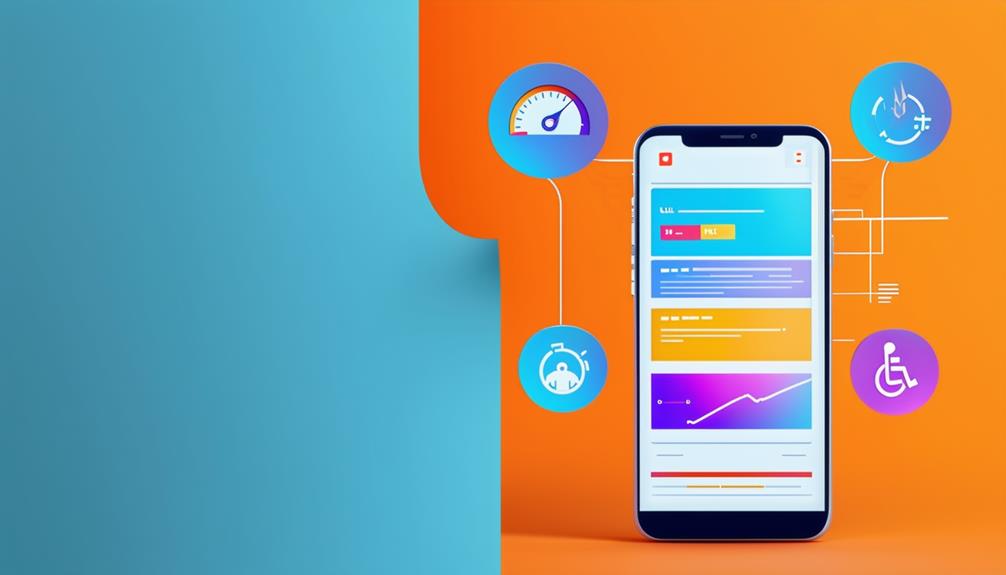You're about to uncover the secrets to making your blog posts stand out in the crowded digital landscape. By mastering the art of SEO, you can attract more readers and boost your online presence. It all starts with understanding the power of long-tail keywords and crafting titles that capture attention. But that's just the beginning. What if you could enhance your posts' visibility even further with just a few strategic tweaks? From optimizing meta descriptions to ensuring mobile friendliness, each tip is a stepping stone to your blog's success. Curious about the next steps in this journey?
Conduct Keyword Research
When it comes to optimizing your blog post for search engines, conducting keyword research is a critical first step. You need to identify the terms your target audience is searching for. Start by using keyword research tools like Google Keyword Planner, Ahrefs, or SEMrush to gather data on search volume, competition, and relevance.
Prioritize long-tail keywords, as they often have lower competition and higher conversion rates. Analyze the intent behind keywords. Are users looking for information, making a purchase, or comparing options? Understanding this helps you tailor your content to meet their needs, improving your chances of ranking higher.
Keep an eye on your competitors. Look at the keywords they're ranking for and consider targeting similar ones if they align with your content strategy. Don't forget to consider search trends. Use tools like Google Trends to see how keyword popularity fluctuates over time.
This data-driven approach ensures you're not just chasing fleeting trends but focusing on sustainable, evergreen content. Regularly revisit your keyword strategy to stay aligned with search engine algorithms and user behavior changes.
Effective keyword research lays the foundation for a successful SEO strategy, driving traffic and engagement to your blog.
Craft Compelling Titles
Armed with thorough keyword research, it's time to focus on crafting compelling titles that capture attention and drive clicks. A strong title is crucial, as it serves as the first impression of your content. Start by incorporating primary keywords naturally, making sure they align with user intent.
Data shows that titles with numbers and power words like "best," "tips," and "strategies" often perform better in search results. An analysis of headline structures indicates that question-based titles can boost engagement by sparking curiosity.
Use analytics tools to assess the performance of existing titles, identifying patterns that resonate with your audience. Consider A/B testing different variations to refine your approach. Keep your titles concise—ideally under 60 characters—to ensure they're fully visible in search engine results pages. This visibility can significantly impact click-through rates.
Additionally, personalize your titles by addressing the reader directly. For example, "Discover How You Can Boost SEO with These Tips" feels more engaging than a generic statement.
Optimize Meta Descriptions

To effectively enhance your blog's visibility, optimizing meta descriptions is crucial. Meta descriptions serve as the short summary beneath your blog's title in search results and directly impact click-through rates. By crafting concise, keyword-focused descriptions, you provide search engines and users with a clear understanding of your content.
Aim for 150-160 characters to ensure your description is fully displayed in search engine results pages (SERPs). Incorporate primary keywords naturally to align with search intent. Data shows that well-optimized meta descriptions can boost click-through rates by up to 30%.
Analyze your target audience's search behavior and include terms they're likely to use. Remember, a compelling meta description acts as a call to action, enticing users to click through to your site. Use actionable language and address users' needs or pain points.
For instance, if your blog post solves a problem, highlight that solution in the meta description. Avoid keyword stuffing, which can lead to penalties and reduced rankings. Instead, focus on clarity and relevance.
Test different descriptions using A/B testing to determine which versions drive more traffic. By applying these analytical strategies, you can significantly enhance your blog's search performance.
Use Header Tags Effectively
In the realm of SEO, using header tags effectively can be a game-changer for your blog's structure and search visibility. Header tags, from H1 to H6, help search engines understand your content's hierarchy and relevance. They act as signposts, guiding both readers and search engines through your post. Failing to use them correctly can lead to poor user experience and diminished rankings.
To maximize SEO potential, you need to ensure that header tags are keyword-rich, relevant, and strategically placed. An H1 tag should encapsulate your primary keyword and reflect your blog's main theme. Subsequent headers (H2, H3) should break down content into digestible sections, using related keywords. This not only improves readability but boosts your chances of higher search rankings.
Here are some data-driven tips for effective header tag usage:
- Use only one H1 tag: Make it count with your primary keyword.
- Break content into sections: Use H2 and H3 tags for subtopics.
- Include keywords naturally: Enhance relevance without keyword stuffing.
- Maintain logical hierarchy: Avoid skipping header levels.
- Analyze competitor headers: Gain insights from top-ranking blogs.
Incorporate Internal Links

Incorporating internal links strategically can significantly enhance your blog's SEO performance and user engagement. Internal links help search engines understand your site's structure and distribute page authority more evenly. By linking to relevant content within your blog, you create a web of information that keeps readers engaged and encourages them to explore more of your site, reducing bounce rates.
When you include internal links, focus on using keyword-rich anchor text. This not only improves the SEO value of the linked pages but also provides context to search engines about the content's relevance. According to studies, pages with internal links often rank higher, as they signal content importance and cohesion to algorithms.
Analyze your site's most visited pages and link them to newer or less popular posts to distribute traffic and authority effectively. Tools like Google Analytics can help you identify key pages and measure the impact of your internal linking strategy.
Don't overdo it, though—too many links can confuse readers and dilute the SEO benefits. Aim for a balanced approach, linking naturally within your content where it makes sense and enhances the user experience.
Enhance Image SEO
Boosting your blog's SEO with optimized images can lead to better visibility and engagement. Images aren't just visual assets; they're potent SEO tools. Search engines can't read images, but they do read the accompanying text, making optimization key.
By enhancing image SEO, you improve your site's overall load speed, accessibility, and searchability, driving more organic traffic.
Here's how to optimize your images effectively:
- Use Descriptive File Names: Rename your image files with relevant keywords. Instead of "IMG_1234.jpg," use "blue-widget.jpg" to help search engines understand the content.
- Optimize Alt Text: Implement clear, keyword-rich alt text. This not only aids SEO but also improves accessibility for visually impaired users.
- Reduce File Size: Compress images without sacrificing quality. Faster loading times enhance user experience and are favored by search engines.
- Choose the Right Format: Use JPEGs for photos and PNGs for graphics. The right format balances quality and speed.
- Leverage Captions: Include keywords in captions, as they're often read by users and search engines alike.
Improve URL Structure

Enhancing your blog's SEO involves improving URL structures to increase search engine visibility and user engagement. A well-optimized URL is concise, descriptive, and keyword-rich.
Start by keeping URLs short and to the point; research shows URLs with fewer than 60 characters rank higher. Remove unnecessary words like "and" or "the" to streamline readability. Incorporating primary keywords not only boosts relevance but also helps search engines understand your content's focus.
Use hyphens to separate words, enhancing readability for both users and search engines. Avoid underscores as they can confuse search algorithms. Ensure your URLs are lowercase to maintain consistency and avoid potential errors. A study by Backlinko found that shorter URLs tend to outperform longer ones, so aim for brevity without sacrificing clarity.
Furthermore, include categories or hierarchies in your URL structure. This organization aids in navigation and can improve your site's indexing. For instance, use "/blog/seo-tips" instead of a generic "/blog/12345".
Also, avoid dynamic parameters whenever possible, as static URLs are cleaner and more user-friendly.
Focus on Readability
When optimizing your blog for SEO, readability is crucial for keeping readers engaged and improving your site's performance. A well-structured, easy-to-read blog ensures visitors spend more time on your page, decreasing bounce rates and signaling search engines that your content is valuable.
The Flesch Reading Ease score is a useful metric in assessing your content's readability. Aim for a score between 60 and 70, which is suitable for a wide audience.
To enhance readability, consider the following strategies:
- Use Short Sentences: Keeping sentences under 20 words improves comprehension and maintains reader interest.
- Break Up Text with Headings: Organize your content with descriptive headings to guide readers through your article and improve keyword targeting.
- Utilize Bullet Points: Lists, like this one, make information digestible and help readers scan for key points quickly.
- Incorporate Visuals: Images and videos can break up text and illustrate complex ideas, increasing engagement by 94% as some studies suggest.
- Choose Simple Language: Avoid jargon and complex vocabulary to make your content accessible to a broader audience.
Implement Mobile Optimization

After ensuring your content is readable, turning your attention to mobile optimization is a smart move. With over 50% of global website traffic coming from mobile devices, ensuring your blog is mobile-friendly isn't just beneficial—it's essential for SEO success. Google prioritizes mobile-first indexing, meaning the mobile version of your site is a key factor in search rankings.
To effectively implement mobile optimization, focus on responsive design, user experience, and accessible navigation. Here's a quick breakdown:
| Key Area | Importance | Actionable Tip |
|---|---|---|
| Responsive Design | Ensures content adapts to screen sizes | Use flexible grids and layouts |
| User Experience | Enhances mobile users' interactions | Simplify menus, utilize white space |
| Navigation | Facilitates easy site exploration | Implement touch-friendly features |
Responsive design means your blog automatically adjusts to different screen sizes, offering a seamless experience. Prioritize user experience by simplifying navigation menus and ensuring buttons are easy to click. Remember, a streamlined mobile site leads to lower bounce rates and higher engagement.
Analyze mobile traffic data to identify potential issues and refine your strategy. Regularly update design elements to stay aligned with evolving mobile trends. With data-driven decisions, you'll maintain an optimized mobile presence, boosting SEO rankings efficiently.
Boost Page Load Speed
A crucial factor in elevating your blog's SEO is boosting page load speed. Faster pages lead to better user experiences, higher engagement metrics, and improved search engine rankings.
Google data shows that 53% of mobile users abandon sites taking longer than 3 seconds to load. A swift page load not only retains visitors but also signals search engines that your content is valuable.
To optimize your page load speed, consider these data-driven strategies:
- Compress Images: Use tools like TinyPNG to reduce image sizes without losing quality. This can significantly cut down load times.
- Enable Browser Caching: By storing static files locally, your site loads faster for returning visitors.
- Minimize HTTP Requests: Combine files like CSS and JavaScript to reduce server requests, speeding up page delivery.
- Use a Content Delivery Network (CDN): CDNs distribute your content across various global servers, reducing the distance data must travel.
- Optimize Code: Remove unnecessary spaces, commas, and characters from HTML, CSS, and JavaScript files to improve load speed.


Leave a Reply